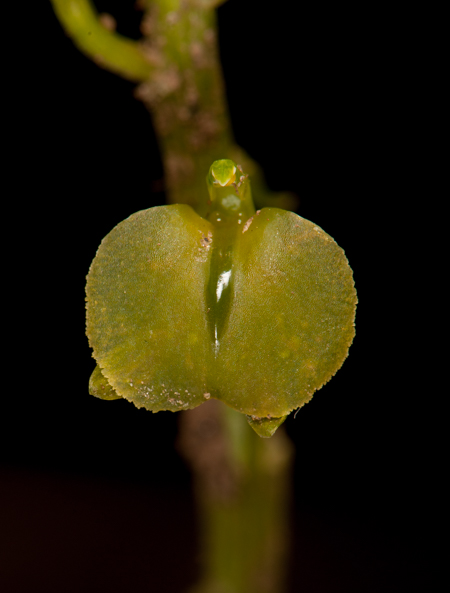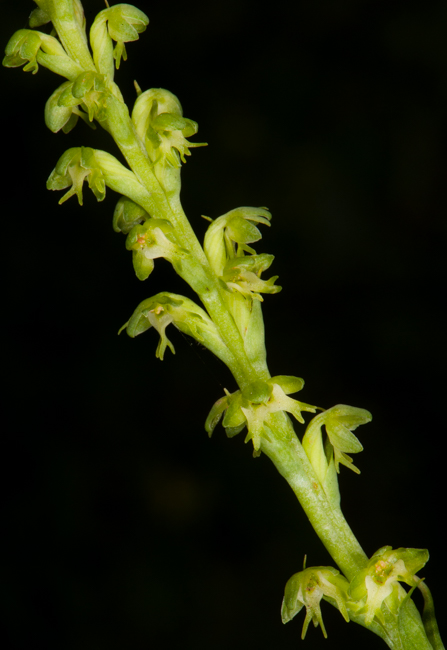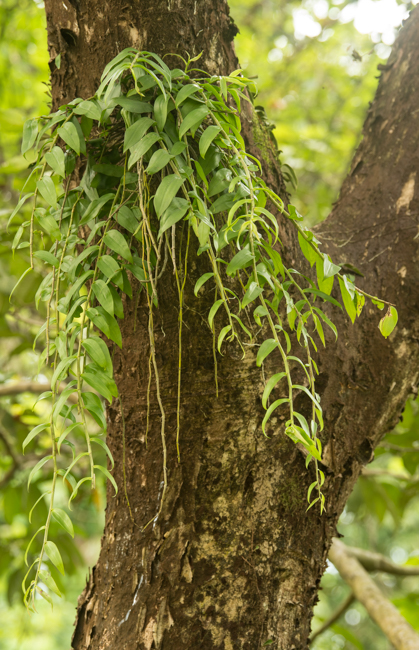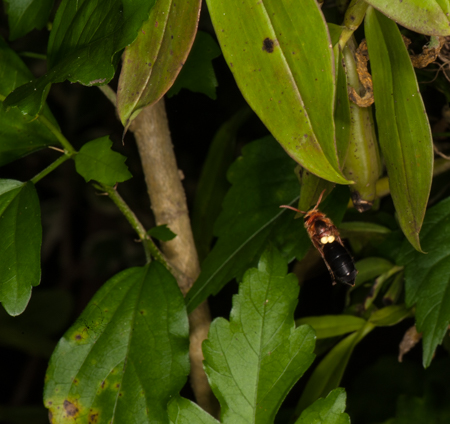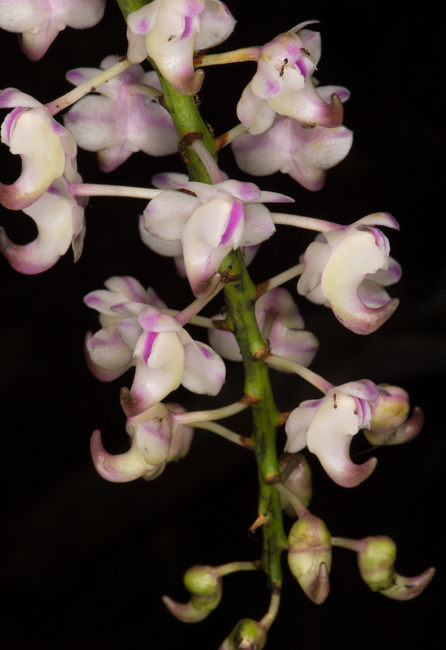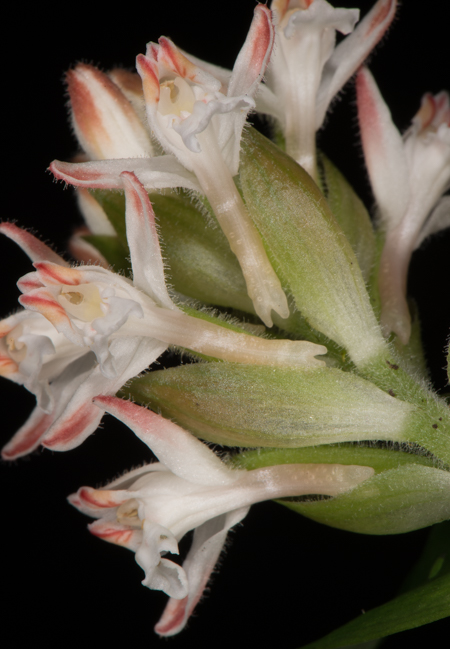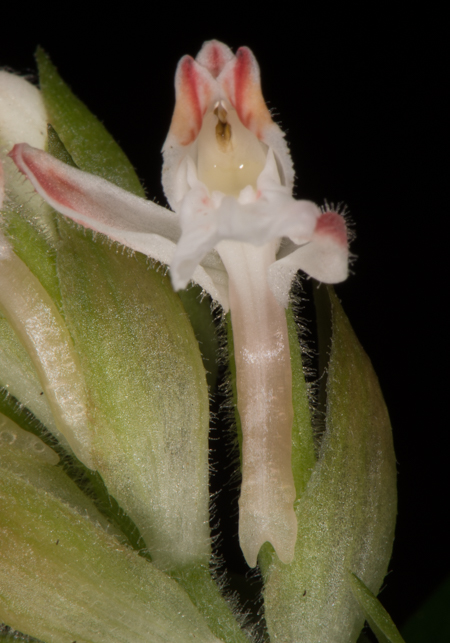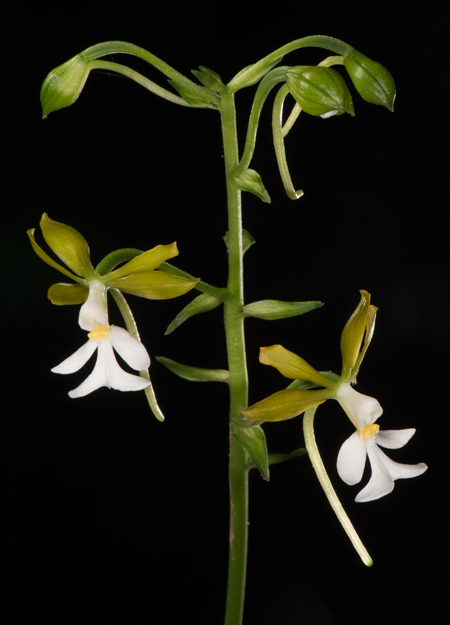Leaf blades in orchids with pseudobulbs arise from the apex of the bulb, with the axis of both remaining same and in a straight line. However, there are cases in which the leaves bent perpendicularly to the axis of the bulb.
This phenomenon is very rare and occurs in only a handful of orchid species. The reason for this unique characteristic is a little vague. During my studies, it was observed that those species with perpendicularly bent leaves always grow facing a particular direction. Hence, it is to be believed that the perpendicularly bent arrangement of the leaf blade may be for receiving maximum sunlight.


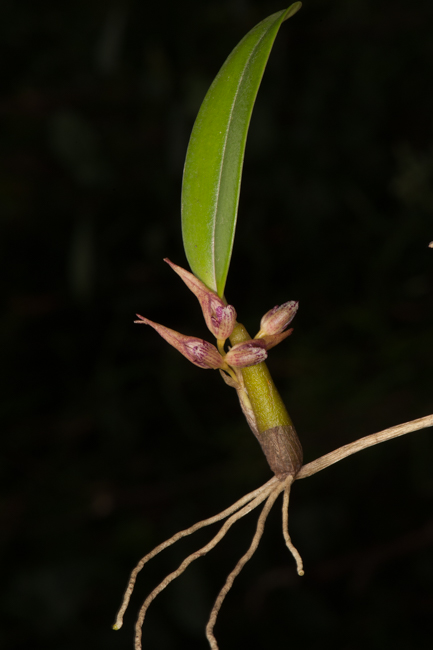
Post 25 – 02/November/2020
